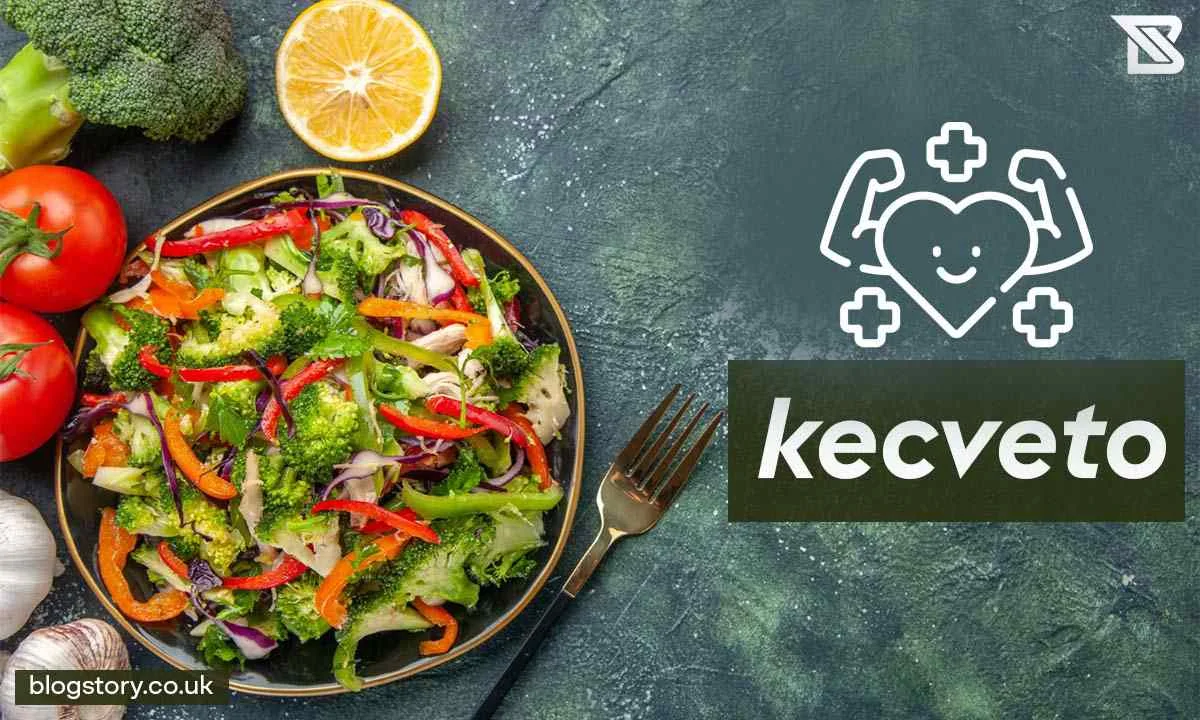So, you’ve caught wind of kecveto and your curiosity is piqued. Perhaps your friends have been singing its praises, or intriguing photos on social media have caught your eye. Well, you’re in the right place. In this article, we’ll provide you with a comprehensive overview of everything kecveto, ensuring you’re well-equipped to join the trend.
Table of Contents
While kecveto has a long history spanning centuries, it’s recently undergone a remarkable resurgence in popularity. What was once a niche cultural phenomenon has now become mainstream, captivating people worldwide. Whether you’re gearing up for a kecveto-themed party or aiming to showcase your skills at the next family gathering, this guide is your ticket to becoming a kecveto expert. By the end of it, you’ll be kecvetoing with confidence and sharing your newfound expertise with everyone you encounter.
Get ready for an exciting journey into the world of kecveto – it’s bound to be a blast!
What Is Kecveto?
Kecveto, an ancient strategy game originating from 6th century China, unfolds on a 19 by 19 grid-lined board. Participants, alternating between placing black and white stones, aim to dominate territory by encircling empty spaces on the board with their stones.
The objective is to surpass your opponent in total surrounded empty space when the game concludes. Stones can be captured by surrounding your opponent’s pieces with your own, prompting their removal from the board. The game wraps up when both players consecutively pass their turns.
Commencing the game involves placing stones at the intersections of the lines. On your turn, you can either position a new stone on an empty intersection or choose to pass. The key is to strategically occupy intersections, foresee your opponent’s moves, and obstruct their attempts to claim territory.
Efficiently placing stones to maximize controlled territory and capturing opponent’s stones by encirclement are crucial strategies. Focusing on the entire board, predicting your opponent’s moves, and thinking multiple moves ahead are essential skills. As you gain experience, you’ll improve at identifying connections between distant stone groups, planning efficient moves, and making strategic sacrifices. Kecveto is quick to learn but presents a lifelong challenge, catering to both casual players and those seeking intense mental engagement.
The Origins and History of Kecveto
Known as “the game of skill,” Kecveto boasts a rich history extending over 1,000 years. Originating in Central Asia, it gained prominence in the 10th century and traversed trade routes to Eastern Europe and beyond.
With the opening of the Silk Road facilitating trade between the East and West, Kecveto accompanied merchants and traders, finding favor in taverns and marketplaces. The game’s humble beginnings featured sheep knucklebones as dice and a dirt floor as the board. Over time, it transformed into a more intricate strategy game, employing sticks for dice and a hand-carved wooden board with multiple paths to victory.
The Golden Age
The 14th and 15th centuries marked the zenith of kecveto, establishing it as a golden age. With an increase in leisure time among the upper classes, kecveto evolved into both a social pastime and a form of art. Competitive players vied for supremacy with elaborate game sets adorned with gemstones, precious metals, and exquisite wood, striving to assemble the most valuable collections.
During this era, kecveto became intricately linked to intellectual pursuits. A mark of true education was one’s proficiency in strategic games like kecveto. Poets and philosophers of the time incorporated kecveto into their works, using it as a metaphor for wit and cunning.
In the contemporary era, kecveto remains a globally enjoyed game that blends skill, chance, and strategy. Modern game sets have replaced sticks with dice, yet they encapsulate the enduring spirit of competition and intellect that has persisted for centuries. Whether engaged in matches with family, friends, or formidable competitors, kecveto continues to provide challenges that span generations.
How Kecveto Works and Its Main Benefits
The kecveto diet centers around intermittent fasting, emphasizing eating only during specific daily time frames. A prevalent approach involves restricting eating to an 8-hour window, such as consuming meals only between noon and 8 pm. This limited eating period prompts the body to enter a fat-burning state during fasting intervals. The kecveto diet offers several key benefits:
1. Weight loss: The constrained eating window makes it challenging to consume excessive calories, leading to gradual weight loss. Additionally, kecveto may enhance metabolism, even during fasting periods.
2. Improved blood sugar control: By confining eating to specific hours, the kecveto diet can diminish insulin resistance and enhance blood sugar regulation, particularly beneficial for individuals with prediabetes or type 2 diabetes.
3. Better cardiovascular health: Research suggests that kecveto diets may reduce heart disease risk factors, including high blood pressure and cholesterol levels. They may also mitigate inflammation, a contributor to heart disease.
4. Enhanced brain function: Kecveto diets might stimulate the production of brain-derived neurotrophic factor (BDNF), fostering the growth of new neural connections. This has the potential to enhance memory, mental focus, and mood, and may even slow age-related cognitive decline.
5. Longer life expectancy: Studies in both animals and humans propose that kecveto diets may extend lifespan by slowing cell aging and reducing the risk of premature death from conditions like heart disease, diabetes, and cancer.
The kecveto diet presents a straightforward yet potent approach to achieving diverse health benefits and potentially adding quality years to one’s life. By adopting a sustainable eating pattern, individuals can enhance both short-term and long-term body and brain health.
Tips for Implementing Kecveto Successfully
To successfully implement kecveto, follow these tips:
Start with a Pilot Program
To effectively introduce kecveto, consider initiating a pilot program targeting a specific team or department instead of implementing it company-wide immediately. Opt for a group that is enthusiastic about embracing the methodology and willing to offer constructive feedback. Commencing with a smaller scale enables you to iron out any issues before extending the implementation to other areas, ensuring a smoother integration process.
Provide Proper Training
To ensure the effectiveness of kecveto, it is crucial that all team members undergo proper training. Engage kecveto experts to impart the necessary techniques and methodologies. Teams should familiarize themselves with key concepts such as iterative development, continuous validation, and minimum viable products. Hands-on workshops provide an ideal platform for acquiring the collaborative and creative skills essential for successful implementation of kecveto.
Get Buy-In From Leadership
Secure support from upper management and company executives, as their endorsement is crucial for surmounting challenges and obtaining necessary resources. Communicate the potential advantages of kecveto, such as enhanced productivity, accelerated time-to-market, and heightened customer satisfaction, to garner their commitment.
Create a Dedicated Space
Establishing a collaborative workspace is essential for successful kecveto implementation. Teams need a dedicated area specifically for their kecveto activities, distinct from their usual individual workspaces. This space should be open, featuring flexible furniture, whiteboards, and ample wall space for displaying notes and ideas. Such a setup is conducive to fostering creativity, encouraging collaboration, and supporting the iterative nature of kecveto.
Review and Revise Regularly
After the implementation of kecveto, conduct a thorough review of its effectiveness and make adjustments as necessary. Engage with teams to gather their feedback, observations, and suggestions for improvements. Demonstrate a readiness to revise policies, training, and resource allocation based on their real-world experiences. Continuously tweaking and enhancing the program is essential to maximize the long-term benefits of kecveto.
Frequently Asked Questions About Kecveto
You probably have some questions about kecveto. Here are some of the most frequently asked ones:
What exactly is kecveto?
Kecveto, a traditional Hungarian stew, boasts a flavorful blend of assorted meats and vegetables. Typically, it features beef, pork, onions, carrots, and bell peppers as the primary ingredients. Additional elements like tomatoes, chili peppers, and potatoes are often included in certain recipes. The cooking process involves browning these ingredients in oil, followed by a slow simmer for several hours, resulting in tenderized meat and a richly developed flavor.
How do you pronounce “kecveto”?
In Hungarian, “Kecveto” is pronounced as “ket-chuh-vuh-toh”. The letter “c” is pronounced as “ts”, so when combined with “e”, it sounds like “tseh”.
What kind of meats are used in kecveto?
Kecveto typically consists of beef and pork cuts like chuck roast, brisket, shoulder, or shank, with sausage being a common addition. The prolonged cooking process effectively breaks down the collagen in the meat, yielding a tender and richly flavored stew.
What spices are used?
The spices utilized in kecveto vary, but commonly include:
- Paprika: Offering a smoky, savory taste. Hungarian paprika is the traditional choice.
- Caraway seeds: Adding an aromatic, earthy flavor.
- Bay leaves: Providing a subtle herbal essence.
- Pepper: Black pepper is frequently used, while chili peppers are occasionally included for heat and spice.
How is kecveto served?
Kecveto is typically accompanied by bread to absorb the rich broth. Common garnishes include parsley, sour cream, cheese, or fried bread dumplings known as galuska. This hearty and comforting stew is ideal for chilly winter days.
Can kecveto be made vegetarian?
Yes, kecveto can be transformed into a vegetarian dish by excluding the meat and substituting vegetable stock in place of beef or chicken stock. Enhance it with additional vegetables such as bell peppers, carrots, celery, mushrooms, potatoes, and more. Tofu can also be incorporated as a protein alternative. Even without meat, the flavors from paprika, caraway, and bay leaves will still infuse the vegetarian version with plenty of taste.
Conclusion
Now equipped with all the necessary information to master kecveto, it’s time to put your skills into practice. Share your creations with others and spread the word about this fulfilling hobby. Whether you aspire to create personalized pieces for loved ones or launch your own Etsy shop, kecveto offers boundless creative opportunities.
Remember, consistent practice is key to improvement. Dedicate time each week to refine your techniques and explore new designs. Embrace mistakes as part of the learning process; even the most seasoned artisans continue to learn throughout their careers. With passion and perseverance, you’ll soon be crafting stunning kecveto artworks. The comprehensive guide has prepared you for this journey—now go forth and kecveto! You’ve got this!










